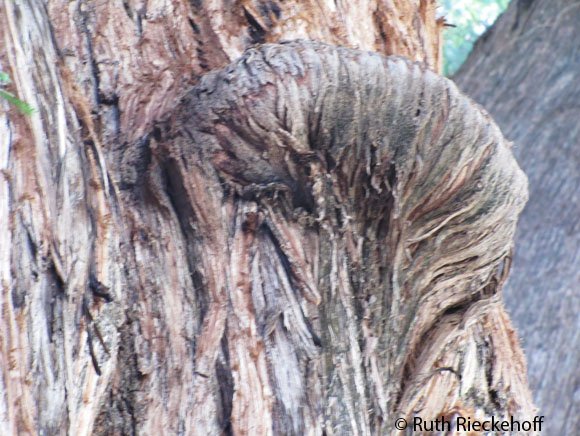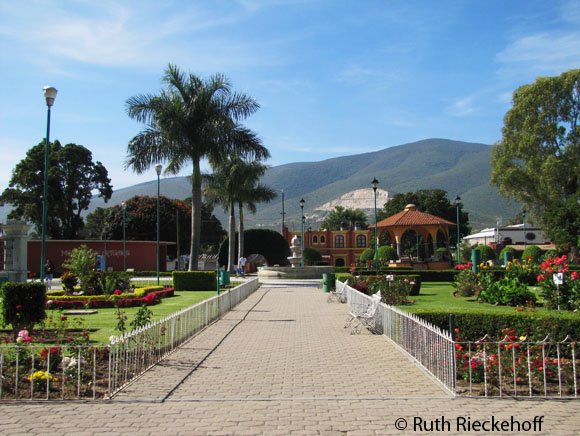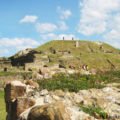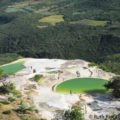This article focuses on the widest tree in the world located in Santa Maria del Tule in Oaxaca.
We all know about those massive living specimens inhabiting the state of California. Some prefer the chilly winds of the Sierra Nevada while others are happier experiencing the foggy mornings next to the Pacific Ocean.
I am referring to sequoias and redwoods. Sequoias are the largest trees in the world in terms of volume. Redwoods are the taller trees in the world (reaching heights of 370 feet).
But there is another species taking the lead role in terms of widest trunk or largest diameter. In the small town of Santa Maria del Tule (Oaxaca), a massive Montezuma cypress is famous for having the “stoutest trunk in the world.”
The tree at El Tule (locals call the town in this way), is known as an “ahuehuete” or “sabino” in Spanish. Don’t get confused. Many people call the tree “Arbol de Tule” or Tule tree.
Tule is an aquatic plant that grew once in the area because it used to be a swamp (that is why the town got the name). The correct way to call it is “Arbol del Tule” or the tree from El Tule (notice the extra “l” in the Spanish wording).
Ahuehuetes like water too. That is why this particular specimen grew stronger in the area. Some calculate it has 2,000 years of age. Its existence is documented in Aztec and Spaniard chronicles.
Now, a lot of people I know do not believe this is the widest tree in the world (mostly Californians who love sequoias and redwoods). They say Oaxacans are using the numbers to their advantage. The resistance encouraged me to do a careful research.
In 2005, the diameter of the tree was 38.1 feet (and it continues to grow, remember it is alive). This measurement by itself makes it the widest in the world.
But, experts get all technical about these things and start to introduce all sorts of considerations. They say the trunk of the ahuehuete is heavily buttressed. If you measure the ‘smoothed out’ trunk (I don’t know how), the diameter is 30.5 feet.
This measurement is still superior than the widest known sequoia. However, a known South African baobab has a diameter of 33 feet (but sources say this is not confirmed).
What to make of all these? Well, this is like trying to define what the largest city in the world is. Personally, I believe the tree at El Tule has the widest trunk in the world.
However, we can forget about records or numbers, this is a gorgeous tree. Its branches are so big that some touch the floor. I tried to take a picture of the entire foliage but couldn’t. I ran out of time to keep “moving farther” in order to get the entire picture.
And you know what else? The tree has a funny side. Locals have started to see figures on its branches. Our guide showed us some.
For example, the one below is clearly a lion.
This one can be looked in two ways (according to me). It you see it as an animal facing to the left, you see an elephant. If you see it as an animal facing to the right, you see a camel. I prefer to see the camel.
In the following one, I see two figures too. It can be a crocodile (if you focus on the two promontories on the right upper hand corner). It can also be a person or animal holding something.
The next one shows a head of garlic.
There are many more figures but I wasn’t quick enough to photograph everything the guide was pointing out.
Oh, and the town is lovely too. The central plaza is very well kept and there is a market close to it.
In summary, all the interesting figures, the massiveness of the tree, the colorful buildings and the peaceful surroundings made my visit to El Tule one to remember. And sorry my dear Californians, I am still claiming I visited the widest tree in the world.
Do you see the figures? Let me know in the comments section below.















Lane says
Great info. I love these “biggest”, “fastest”, “tallest” type posts. BTW, it appears that the tree is going to eat the church in the one photo. 🙂
Ruth says
Thanks Lane. I also love this type of posts. It was fun to research.
M. D. Vaden says
The included bark of the El Tule is the evident give-away that it’s several trunks merged together. Good chance it began with air-layering of branches years ago since the DNA is the same. Most people who don’t work with tree notice the included bark areas and where they are in relation to the form. So its actually a clump that grew together. But its still a super awesome tree. Glad you posted the close-ups of the interesting features because few people photograph those.
Cheers,
M. D. Vaden
PS … my name is linked to related page.